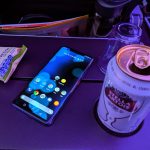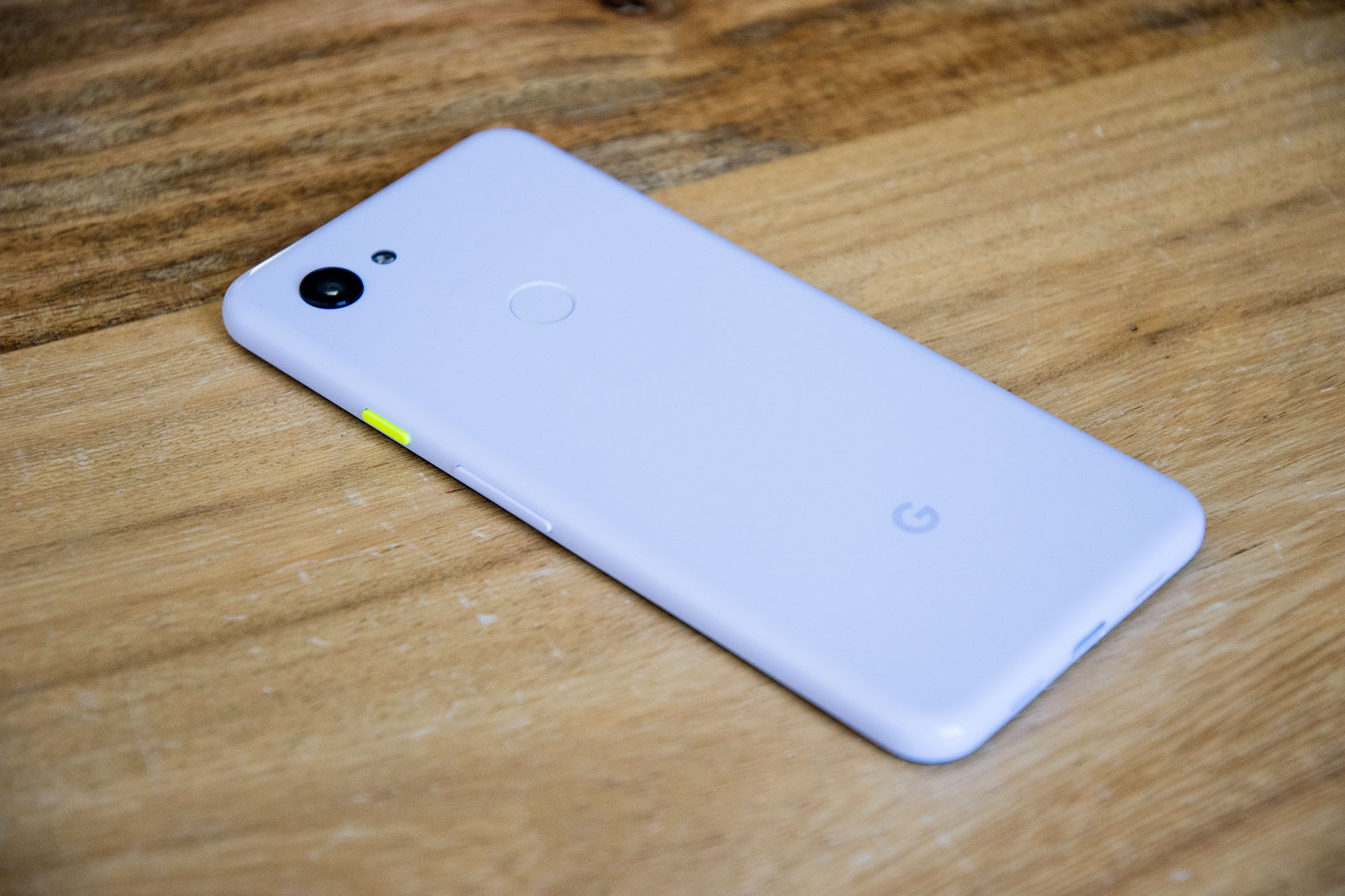Long over are the days of the Nexus. Google's defunct Nexus lineup was comprised of devices generally aimed at developers, with stock Android, the latest updates, and low prices. They gained popularity with Android enthusiasts thanks to the great software experience, low price, and solid hardware. However, they had some major flaws.
The Pixel line replaced the Nexus line and brought Google design into the mix, but it also brought prices up to flagship levels. Enthusiasts were upset, but we were arguably getting better phones out of the deal. For the first time, we had awesome cameras on a Google phone! But with the Pixel 3a and 3a XL, Google is changing things up again by delivering great smartphones in the mid-range segment, and it feels so good. For the most part, the "Pixel experience" has been maintained, especially when it comes to the camera. The phone isn't perfect and its mid-range processor is a put-off for some, but the new mid-range Pixel 3a may actually be best phone option for most people.
Overview
On the front you'll find the 5.6-inch 18.5:9 OLED display with a resolution of 2,220 x 1080, equating to 441 PPI. Despite being OLED, it's actually not that nice looking. The resolution is perfectly fine, but colors and brightness just aren't there. Many devices in the $400 price range do better, even with LCD panels. It's surrounded by chunky bezels, reminiscent of 2016. Yes, the front design doesn't look so modern, but it comes with the benefit of not having annoying rounded display edges that you'll constantly accidentally touch.
On the back is the classic Pixel 3 design, with a gloss section around the camera and a matte section covering most of the back. Below the single camera and flash is a rear-mounted capacitive fingerprint reader, exactly where it belongs. It performs so much better than any in-display unit, quickly and accurately unlocking the device without fail. You can also swipe down on it to access notifications, a feature I find myself using all the time.
This color is called Purple-ish, offered alongside Just Black and Clearly White. It looks white in some lights and a very faint and subtle purple in others. It's an extremely quirky and pleasant color and is the one I'd recommend.
On the right, you have your power and volume buttons. The colored power button is such a pleasure, and even though it doesn't really matter, it really makes the device stand out. At the bottom, you have two speaker grills and a USB-C port.
On the top is another mic and… what is that? A headphone jack? I could sing praises about this lovely port, allowing us to use our still relevant and popular 3.5mm headphones without having to worry about Bluetooth connections, apps, charging batteries, or annoying pairing processes. Plug them in and they work. Hooray! The lack of a headphone jack is still a sore spot on flagship phones for me, and having one again feels just as good as I'd imagined. That being said, a 3.5mm headphone jack in 2019 isn't necessarily a must-have feature since Bluetooth headphones have taken over the market.
The size of the phone is worth talking about. In a world where all flagships are huge (I mean, look at the OnePlus 7 Pro!), the Pixel 3a is relatively small and easy to use with one hand. It's a real pleasant surprise, and I chose the 3a over the XL model and I think many people will do the same.
Hardware
Inside you'll find a Snapdragon 670, 4GB of RAM, 64GB of storage, a 3,000 mAh battery, and bezel galore. There have been sacrifices made here to get down to the $399 price point of the Pixel 3a. Features you'd find on the Pixel 3 like wireless charging, IP68 water resistance, the second wide-angle front-facing camera, the glass and aluminum design and the dual front-facing speakers, are gone. Thankfully the 3 XL's notch is also gone. You're left with a phone with fewer features, but one still fairly competitive at its price point.
Other than that, you get many of the flagship goodies. Bluetooth 5.0, 2z2 MIMO WiFi, NFC, an OLED display, USB-C with Power Delivery quick charging at 18W watts, a Titan M security chip, and more. The speakers aren't both front facing (the bottom one is bottom firing) but they're very loud and clear, above average for even the best of smartphones. The haptic feedback also needs mentioning because it's one of the best on the market. Each buzz is sharp and precise, making typing a pleasure. Many flagships can't come close.
Build quality

This is a sore spot for the Pixel 3a. Gone are the premium materials used on the Pixel 3, replaced with a unibody plastic shell. The looks remain, but the quality has dipped. This plastic feels unfortunately cheap, cheaper than your average plastic phone.
It's also prone to scratching along the gloss parts, which encapsulate the camera area and the sides. All of the demo units at Google I/O 2019 were extremely scratched up, which is a bit expected for demo units but the front glass was unscathed. After all, these were brand new units. Fortunately, plastic is more durable than glass when it comes to falls, so you won't have to worry about shattering the back of your phone if you accidentally drop it when pulling it out of your pocket.
The front lacks Gorilla Glass, but it's not regular tempered glass. It's from a company called Dragontrail. If I wasn't told this, I would never tell the difference. It seems to be just as impervious against regular scratches and dings as Corning's offerings so this isn't a concern. The buttons are nice and clicky, but the actuation force is a bit high and can get annoying, but you'll quickly get used to it.
All of these problems are easily solved by using a case, which most people do anyway. Google's cloth case is bulky but feels oh so nice, and looks the part too with its matching colored power button.
Software

This is stock Android in all its glory, along with all the Google Pixel enhancements we have come to know and love. It runs Android 9.0 Pie with the latest security update at all times, no bloat, no stock app replacements… it's all Google.
Compared to AOSP, it, of course, features Google's own apps like Google Calendar, Google Photos, Google Messages, and more. And minor tweaks are welcome since the AOSP variants are horribly outdated. What is unique to Pixels is the blue accent color, rounded notifications, the always listening "Now Playing" feature which tells you the name of the song and artist that's playing in the store or at Starbucks, and many features like extra Google Assistant functionality.
For enthusiasts, there's so much to love here. It's sleek, fast, and simple. For the average user, some may feel that things are left out. There are no bright colors, no extra gimmicky features, nothing that other manufacturers add to their skins. Some may love it, some may not. Many may not even care. It's an excellent experience through and through and doesn't leave you annoyed whenever you want to do anything more than send a text.
Simply put, the software allows you to enjoy the phone without getting in the way.
Performance
Rocking a Snapdragon 670 and 4GB of RAM, the specs aren't exactly flagship level. At this price point, you can find many devices that outperform the Pixel 3a on paper, and the lack of Snapdragon 800 series is a bit of a disappointment. With the other sacrifices made to this device, some might argue that at least specs should have stayed the same.
Thankfully performance didn't take a major hit. This thing is buttery smooth and relatively snappy. Put side-by-side with some flagships, app load times are noticeably slower. You'll often find yourself staring at a white screen for a fraction of a second before the app pops up. However, the performance is still very quick and if you're not comparing the two, you'll likely not notice.
Thankfully fluid animations remain, and you won't be seeing many frame drops unless you're loading the phone up. It's a smooth experience through and through, something many phones running 600 series processors cannot say. And with the same 4GB of RAM as the standard Pixel 3 (and Pie's mostly solved memory issues), apps stay in memory and don't close randomly.
All in all, the performance is more than adequate, and I'd even say not far off from the best of the best.
Camera

The one thing Google did not skimp on with the Pixel 3a is the camera. It's the same 12.2MP unit as the standard Pixel 3, and though there are subtle differences in the final photo, it's over 95% there. And considering just how damn good the Pixel 3 camera is, the 3a will definitely blow you away.
This phone does with one sensor what others struggle to do with two. A software-based portrait mode offers some incredible and shockingly natural results, some being better than flagship blur modes of other brands. Nighttime photos using Night Sight and optical image stabilization stay sharp as a tack while providing a pretty incredible amount of light. HDR+ offers fantastic dynamic range, even though it does get a bit unnatural looking at times. Overall, the camera is consistent and phenomenal.

When it comes to standard photos, you do lose out on quite a bit of detail compared to other flagships. It's not as sharp or detailed as, for example, the Huawei Mate 20 Pro. The camera hardware just isn't there, even when backed by Google's amazing software wizardry. There's also some blurring in lower light if you're not using Night Sight, likely due to the lower end sensor. It's definitely not perfect.
The front facing camera is a definite downgrade, lacking an ultra wide angle lens that made for some amazing group photos. It was definitely awesome at parties and is sorely missed. However, selfies are still quite good and the software-based portrait mode is excellent.
The camera app is well designed and I like that hitting back from any mode will first bring you back to the normal camera mode. Other modes are included like a Playground mode, which allows you to play with AR characters like Captain America and stormtroopers. It's a fun little gimmick. Panorama mode, in my experience, is pretty bad.

There's a pretty long processing time on photos after they are shot, but to the slower Snapdragon 670. This doesn't affect actually taking photos, as even multiple shots in succession will be lightning quick without a single stutter, but you will have to wait for it to process before it's done.
On the topic of video, I'd say the Pixel 3a does an okay job. There's no 4K60 support here, and stabilization is fairly mediocre. However, videos are relatively smooth and detailed and the mic does well in noisy environments. It's nothing to write home about though.
Where flagships have three or even sometimes four cameras now, you won't get the flexibility of telephoto or ultrawide angle lenses here. Yes, they're important, and the ultrawide especially is incredibly useful. So while you are getting one of the best regular cameras on the market, you will miss out on the extra bells and whistles.




















Battery life
Battery life has always been the weak spot of the Pixel series, and the Pixel 3a is not too different. However, it does perform better than its predecessors and even the more expensive Pixel 3. The Pixel 3a got a 75 mAh boost from the Pixel 3 up to 3,000 mAh, while the 3a XL is up a whopping 270 to 3,700 mAh. Paired with an OLED display and a lower end processor, the Pixel 3a should get you through the day with moderate use without an issue.
Heavy use can kill the battery before bedtime (we're talking like 6+ hours of screen-on time) but you'll still have enough juice left to get through work without a top up. While it's pretty good compared to many Android smartphones, it falls short of the best that can easily go a day and a half or even two days without needing a top-up.
Thankfully you do have USB PD quick charging at 18W with an 18W power brick included in the box, so you can get to half charge in around half an hour.
Conclusion

The Google Pixel 3a is a phenomenal bargain at $399 (and $479 for the XL model). You're getting so much for your money, including that brilliant camera and an amazing software experience. Sure the device has some flaws, like the somewhat cheap plastic build quality (when other devices in this class use flagship-grade metal and glass) and a lower end processor than we'd like. However, the pros far outweigh the cons.
If you're looking for a great phone that doesn't break the bank, this may be your best choice. In fact, you just might be persuaded to take the Pixel 3a and its amazing camera over a flagship smartphone like the OnePlus 7 Pro or even the Samsung Galaxy S10+. With the Pixel 3a, Google has proven the mid-range is good enough.
Google Pixel 3a Rating: star_fullstar_fullstar_fullstar_fullstar_0 (4/5)
The Good
- Camera is one of the best
- Night Sight and portrait mode are amazing
- Great size, ideal for one-handed use
- Purple-ish color and neon power button are so pretty
- Headphone jack
The Bad
- Build quality is poor
- Display isn't great
- Snapdragon 670 is slow at times
- Battery life isn't amazing
from Phandroid http://bit.ly/2JOfOVV
via IFTTT




























